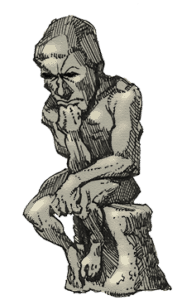So much has already been said about the Bud Light issue I’d decided I wasn’t going to write about it. But then I was watching a show with my oldest daughter, the one who’s been obsessed with horses since she was four, and this ad came on.
“Wow,” she said. “Do they think they can pretend nothing happened?”
“Looks like it,” I nodded.
“Both kinds of my horse friends are mad at them now,” she said.
“Both kinds?”
“The country-music, cowboy-hat, Western kind, and the indie-rock, equestrian-helmet, English kind,” she clarified. “But for opposite reasons.”
“Yeah.”
“Bud Light’s never going to get it, are they?” she asked, shaking her head. “I guess it’s hard to get back in the saddle if you can’t admit you got thrown.”
I’m so proud of that kid.
One of the enduring advantages I’ve seen when a brand has an internal consensus on its story framework—the foundational elements that make its story go—is that it makes it easier to own when you get thrown. Having an agreement on the heart of your story is like having a new set of eyes through which to view the brand—a different perspective than what you might get through a competitive or science lens. Knowing your story helps you define and agree on your brand’s values in a way that helps the audience understand who you really are.
I’ve seen lots of brand values statements over the last twenty years that list the same generically positive descriptors anyone would like, and nobody would object to. That’s not the kind of values I’m talking about. When you think about a brand from a story perspective—like it’s a character in the story of its category—then you realize that its values are supposed to define it by embodying what it believes in. Your brand values should make it clear what the brand stands for, will sacrifice for, is willing to fight for. And not just for the edification of your consumers, but as an instruction set for those who bring your brand to life. Values aren’t supposed to be generic and easy. They’re supposed to be defining and meaningful, which can make them difficult to live by and live up to.
Having a foundation built on hard values not only helps you decide what to do and not do, it helps you own your decisions and understand the difference between “making a mistake” and “taking a stand”. Coming at branding from a competitive or science perspective, it can be hard to justify any move that would result in conflict. That tends to push brands toward bland and generically positive values. In story though, conflict is an asset—it’s the engine that makes your story go. It engages audiences and defines who a character really is. Anybody can pretend to be awesome when things are going well. We learn who characters, people, and brands really are when we see how they react in the moments when things go wrong—when they get thrown. Consequently, a solid consensus on your brand’s authentic story can give it the ability to own the energy of its struggles, harness it, and ride its conflicts. That allows you to keep steering the identity of the brand for your audience instead of handing the reins off to your critics.
Unfortunately, without a consensus on their story and a handle on their authentic values, many brands wind up afraid of their conflicts and living in denial of their flaws and vulnerabilities. They can’t own their conflicts and internal struggles, so they ignore them, pretend they don’t exist, or act like there’s no problem.
I thought this earlier Bud Light ad hit that nail right on the head. Pouring down rain on our big outdoor festival? No problem! It’s actually awesome! Unfortunately, instead of making a brand’s problems go away, denying or ignoring a conflict the audience is aware of tends to come across like hand-waving to distract them. Denying or ignoring the problem almost always makes things worse and deepens negative perceptions of the brand.
Bud Light is in a bad place. It has stirred up a giant controversy and doesn’t seem to have a north star to follow to find its way out of the resulting firestorm. Instead of owning the conflict and taking a stand one way or the other, it’s trying hard to pretend nothing is wrong and hoping it will all just go away. That’s making some otherwise pretty solid commercials—communications that might have felt moving and authentic under a different set of circumstances—look clumsily manipulative and disingenuous.
It’s interesting to contrast how Bud Light reacted with what Nike did in a very similar situation. At approximately the same time as Bud Light (April of 2023), Nike also associated itself with the same influencer and, likewise, stirred up considerable controversy. However, when critics challenged that relationship, instead of backing down, Nike doubled down. It challenged its audience to, “be kind, be inclusive, and encourage each other.” This response seems to flow directly out of Nike’s values regarding equity and teamwork. Nike made a stand consistent with the brand identity, and by and large, that took a lot of the wind out of the opposition. Bud Light, on the other hand, has backpedaled furiously—not to take a stand, but to avoid taking one. And, to date, its $15K influencer promotion has cost the brand its long-standing position as the world’s best-selling beer, close to $400 million in sales, and by some estimates, nearly $27 Billion in shareholder value. It’s tough to say if Bud Light will ever be able to admit it got thrown, quit pretending everything is fine, and do something really hard—dust off, stand up for something it believes in, and get back in the saddle. In the meantime, it will continue to look like the only things the brand really values are popularity, money, and easy choices.
